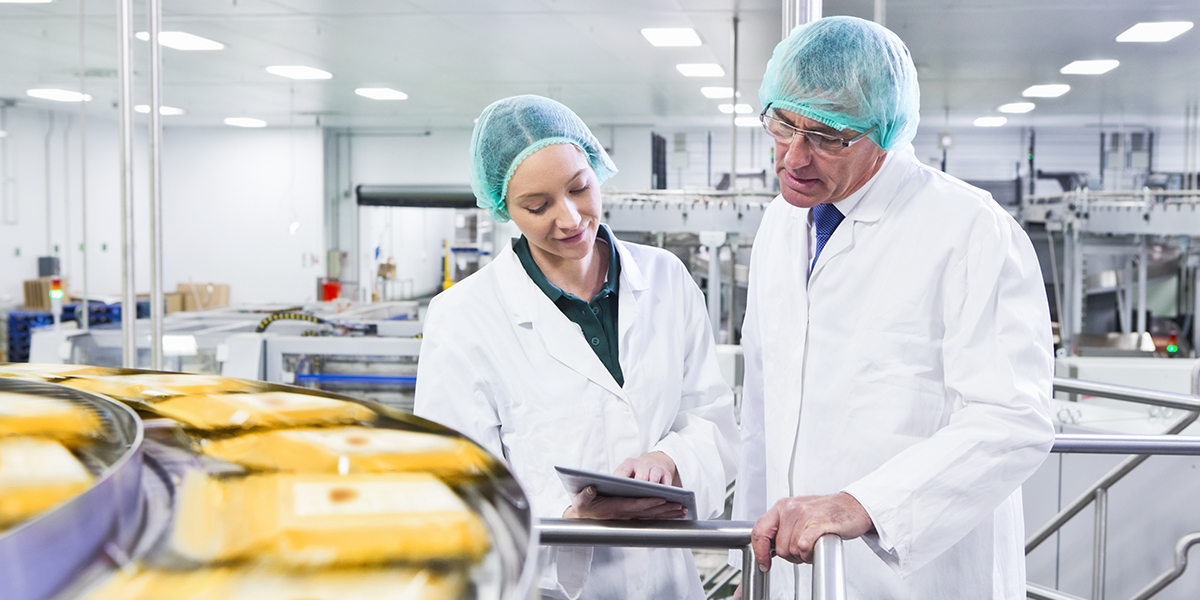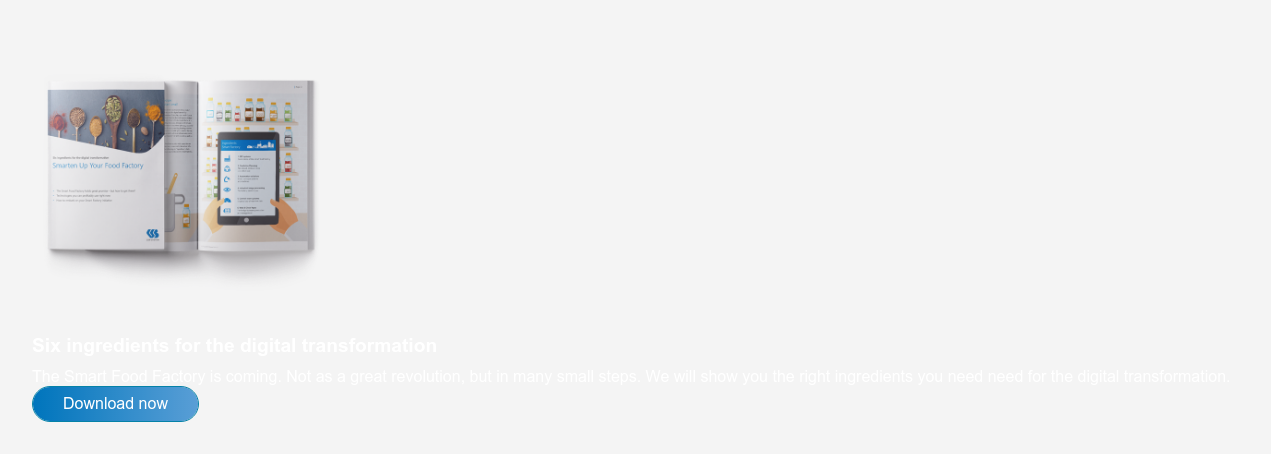The conditions in the dairy industry are complex. If you want to succeed with your dairy, then there is no way around digitization. However, what does this mean in concrete terms? What do you have to observe when digitizing a dairy? Five recommendations for decision-makers.
The global dairy industry is facing conflicting priorities that are mainly influenced by three central factors:
- Increasingly tight social requirements, for example with regard to environment, sustainability, animal welfare and health
- High national and international competition, which is due to milk substitutes and milk imitation products
- A high concentration of demand in food retail
Dairies that consistently address these challenges must understand the topic of digitization. The efficient use of technologies provides new opportunities to reduce costs, to accelerate and automate production processes, and to open up new digital sales channels. In our blog, we have summarized what you, as a decision-maker, should observe.
1. Digitization of a dairy: Think big, start small and develop for long term use
Every digitization project in the dairy industry starts with a concept. It is not only important to focus on your own processes in milk processing, you additionally need to take into account current and future needs of customers and consumers. In your initial considerations, determine your target areas for the digital optimization, for example:
- Agriculture / milk production
- Processing
- Packaging & Logistics
- Trade/ New Business
- Consumers
After you have defined the key fields, approaches to enhance the digitization in the respective area will emerge almost automatically. The best way does not start with a highly complex digital strategy, but with small steps. The motto of many dairies, having integrated digitization successfully in their daily routines, is start small and then continue to develop further. One example: In raw milk receiving, the most important data is captured so it can be processed digitally. In the continued process, the use of the value-based ingredients, fat and protein, and their use and application in the products can be digitally tracked in order to enable a software-controlled accounting of the raw material for use later on.
2. Full digitization power for milk processing
The biggest digitization potential – and the biggest need – lies in the core processes of the value-adding departments in production. In many dairies, you can still find a great variety of technical solutions, diverse production facilities and automation concepts, some of them still using analog or digital measurement and control technology.
In addition, the data from the ERP system is often not available in production or in the filling department. This leads to error-prone manual entries of the minimum sell-by date.
The good news is, even the smallest digitization step can mean a quantum leap. With a gradual “introduction” or “increasing implementation” of digital control and traceability of production, from the manufacture of semi-finished goods to filling, you can bring out the biggest opportunities for cost reduction or increased efficiency.
Other concrete examples for the use of digital solutions are quality control, accounting of raw material use or projecting maintenance of production machines. By linking measurement technology and evaluation systems, the dividers can be better controlled, and the maintenance procedures can be planned more efficiently.
Picking is an area in which digitization projects pay off very fast. Some years ago, Züger Frischkäse AG from Switzerland achieved a time saving of 50% in picking while minimizing the error rate through a combination of high-bay storage and mobile data capture.
3. Use of the ERP system for interlinking the dairy
ERP systems in production are the obvious choice in order to achieve the overall goal of interlinking all departments, processes and stakeholders. Today eight out of ten dairies data is not merged at all, or merged only partly, with the data from the enterprise resource planning system. This offers a great potential to create better transparency in production.
ERP systems are capable of exchanging data with the process control systems in production. Consequently, they become the central nervous system in the dairies, as they are able to communicate with the various automation systems.
Merging the commercial and technical systems makes it possible to link, evaluate and utilize the data from sales, purchase, production, QM, maintenance and other data from plant control systems. At the end of the day, this provides the necessary transparency for the corporate management. Rene Guhl, managing partner of Naabtaler Milchwerke: “We don't have the time to ask where data comes from and how it was prepared, which is why we have jointly developed our ERP system to provide a decision-making basis whenever we need it. We no longer have piles of paper documents or Excel spreadsheets, from which we had to laboriously extract the information we needed. All management decisions, whether operational or strategic, are based on live actual data.”
Behind this is a strategy of one hundred percent integration, which covers more than mere production. Naabtaler uses the ERP system from start to finish: from asset accounting to time management, and from laboratory integration to maintenance.”
4. Digitization is the basis for the traceability of dairy products
Imagine a bad batch of your top-selling yogurt was placed on the market - and your employees have to first look through folders to find the right information. Quite a problem, isn't it? How much easier would it be if your ERP system informed you at the push of a button from which raw milk, which other raw materials, and when the yogurt was produced?
Each digitization step improves the traceability of dairy products - and this not only becomes an added sales-promoting value, but a prerequisite to doing business with purchasers in food retail, in the export business, and in the processing industry. Therefore, digital information must be made available by consistent input, evaluation, and linking of data from the various business areas.
Again, the ERP system plays the pivotal role in merging this data: It combines the data from the process control system with the data from purchasing and from the laboratory, integrating the information of measuring devices and scales. In the end, this multidirectional information flow supplies the precise and quick evaluations that are required in case of a recall.
Today in daily business only few dairies are able to portray traceability in audits at the push of a button. In most cases, this work is still very timely and resource intensive, which means a lot of stress for quality management. Companies relying on digital support can concentrate on controlling and monitoring the processes. This also creates additional flexibility for the optimization of the entire processes.
5. Digitization is people business: Clarify important questions in advance
Robotics and AI will be here - but not very soon. Until then, the digitization of dairies primarily will remain a project that will be implemented together by people from various disciplines.
This gives you the opportunity to discuss and clearly define important matters in advance. For example with regard to the technical possibilities that are available for your project. Only with the joint commitment of all participants, can the tasks of the project ultimately be solved. This sounds obvious, but in fact this point is frequently raised in discussions. One example: If the existing technical systems do not allow automatic data processing, you have to find another solution as a “bridge”. A laboratory device that cannot send data to the ERP system is no showstopper at all. In such a case, you can attach the label of the respective production batch to the reports, scan them and allocate the data / information to the respective production in the QM system.
Not to forget your own employees: They must be involved and convinced right from the start. If you look at the practice in dairies, many employees have worked with their own solutions such as Excel for years. It is often difficult for them to recognize the advantages of a new system. “At first, many employees feel that the digitization is a step backwards,” recently a managing director shared his experiences. After all, the individual employees lose part of their routines, tasks and tools. What can you do about it? As managers, live and breathe digitization each and every day. Who better to prepare your company for the digital future than the person at the top?


